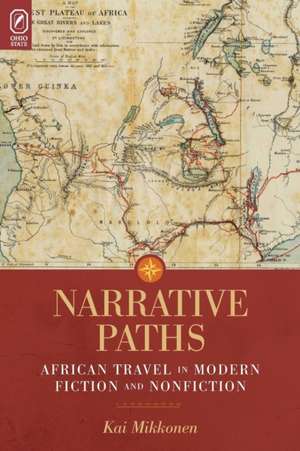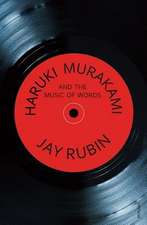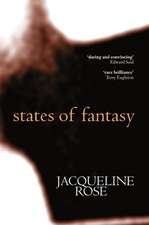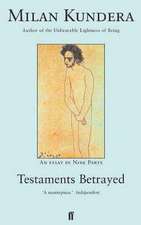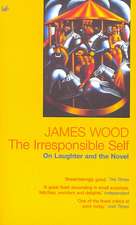Narrative Paths: African Travel in Modern Fiction and Nonfiction: THEORY INTERPRETATION NARRATIV
Autor Kai Mikkonenen Limba Engleză Paperback – 17 mar 2016
In Narrative Paths: African Travel in Modern Fiction and Nonfiction, Kai Mikkonen argues that early twentieth-century European travel writing, journal keeping, and fiction converged and mutually influenced each other in ways that inform current debates about the fiction–nonfiction distinction. Turning to narratives set in sub-Saharan Africa, Mikkonen identifies five main dimensions of interplay between fiction and nonfiction: the experiential frame of the journey, the redefinition of the language and objective of description, the shared cultural givens and colonial notions concerning sub-Saharan Africa, the theme of narrativisation, and the issue of virtual genres. Narrative Paths reveals the important role that travel played as a frame in these modernist fictions as well as the crucial ways that nonfiction travel narratives appropriated fictional strategies.
Narrative Paths contributes to debates in narratology and rhetorical narrative theory about the fiction–nonfiction distinction. With chapters on a wide range of modernist authors—from Pierre Loti, André Gide, Michel Leiris, and Georges Simenon to Blaise Cendrars, Louis-Ferdinand Céline, Joseph Conrad, Graham Greene, Evelyn Waugh, and Isak Dinesen (Karen Blixen)—Mikkonen’s study also contributes to postcolonial approaches to these authors, examining issues of representation, narrative voice, and authority in narratives about colonial Africa.
Narrative Paths contributes to debates in narratology and rhetorical narrative theory about the fiction–nonfiction distinction. With chapters on a wide range of modernist authors—from Pierre Loti, André Gide, Michel Leiris, and Georges Simenon to Blaise Cendrars, Louis-Ferdinand Céline, Joseph Conrad, Graham Greene, Evelyn Waugh, and Isak Dinesen (Karen Blixen)—Mikkonen’s study also contributes to postcolonial approaches to these authors, examining issues of representation, narrative voice, and authority in narratives about colonial Africa.
Din seria THEORY INTERPRETATION NARRATIV
-
 Preț: 283.42 lei
Preț: 283.42 lei -
 Preț: 280.83 lei
Preț: 280.83 lei -
 Preț: 239.67 lei
Preț: 239.67 lei -
 Preț: 234.28 lei
Preț: 234.28 lei -
 Preț: 283.09 lei
Preț: 283.09 lei -
 Preț: 281.44 lei
Preț: 281.44 lei -
 Preț: 266.08 lei
Preț: 266.08 lei -
 Preț: 292.04 lei
Preț: 292.04 lei -
 Preț: 303.58 lei
Preț: 303.58 lei -
 Preț: 327.15 lei
Preț: 327.15 lei -
 Preț: 280.67 lei
Preț: 280.67 lei -
 Preț: 314.98 lei
Preț: 314.98 lei -
 Preț: 293.63 lei
Preț: 293.63 lei -
 Preț: 258.54 lei
Preț: 258.54 lei -
 Preț: 190.00 lei
Preț: 190.00 lei -
 Preț: 282.71 lei
Preț: 282.71 lei -
 Preț: 329.75 lei
Preț: 329.75 lei -
 Preț: 502.96 lei
Preț: 502.96 lei -
 Preț: 363.79 lei
Preț: 363.79 lei -
 Preț: 273.08 lei
Preț: 273.08 lei -
 Preț: 315.95 lei
Preț: 315.95 lei -
 Preț: 274.07 lei
Preț: 274.07 lei -
 Preț: 274.27 lei
Preț: 274.27 lei -
 Preț: 255.21 lei
Preț: 255.21 lei -
 Preț: 282.58 lei
Preț: 282.58 lei -
 Preț: 283.34 lei
Preț: 283.34 lei -
 Preț: 240.43 lei
Preț: 240.43 lei -
 Preț: 255.85 lei
Preț: 255.85 lei -
 Preț: 366.46 lei
Preț: 366.46 lei -
 Preț: 277.71 lei
Preț: 277.71 lei -
 Preț: 237.76 lei
Preț: 237.76 lei -
 Preț: 504.32 lei
Preț: 504.32 lei -
 Preț: 352.65 lei
Preț: 352.65 lei -
 Preț: 542.18 lei
Preț: 542.18 lei -
 Preț: 324.12 lei
Preț: 324.12 lei -
 Preț: 543.17 lei
Preț: 543.17 lei -
 Preț: 311.92 lei
Preț: 311.92 lei -
 Preț: 344.48 lei
Preț: 344.48 lei -
 Preț: 294.40 lei
Preț: 294.40 lei -
 Preț: 227.88 lei
Preț: 227.88 lei -
 Preț: 281.96 lei
Preț: 281.96 lei -
 Preț: 272.33 lei
Preț: 272.33 lei
Preț: 286.61 lei
Nou
Puncte Express: 430
Preț estimativ în valută:
54.84€ • 57.41$ • 45.65£
54.84€ • 57.41$ • 45.65£
Carte tipărită la comandă
Livrare economică 31 martie-14 aprilie
Preluare comenzi: 021 569.72.76
Specificații
ISBN-13: 9780814252024
ISBN-10: 0814252028
Pagini: 344
Dimensiuni: 152 x 229 x 25 mm
Greutate: 0.5 kg
Ediția:1
Editura: Ohio State University Press
Colecția Ohio State University Press
Seria THEORY INTERPRETATION NARRATIV
ISBN-10: 0814252028
Pagini: 344
Dimensiuni: 152 x 229 x 25 mm
Greutate: 0.5 kg
Ediția:1
Editura: Ohio State University Press
Colecția Ohio State University Press
Seria THEORY INTERPRETATION NARRATIV
Recenzii
“There is much to admire in Kai Mikkonen’s extended analysis of the travel writing and fiction of Loti, Céline, Gide, Leiris, Simenon, Cendrars, Conrad, Greene, Waugh, and Blixen. Narrative Paths: African Travel in Modern Fiction and Nonfiction makes a valuable contribution to an often neglected but quite appealing genre by demonstrating that travel narrative appropriates devices from fiction to portray ambiguity of voice and perspective. The insights on the interconnectedness between an author’s travel writing and his or her fiction give us strategies for approaching both genres as well as reasons to question the assumptions on which both genres are traditionally founded.” —Deborah Losse, Arizona State University, author of Syphilis: Medicine, Metaphor, and Religious Conflict in Early Modern France (OSU Press)
“Mikkonen’s Narrative Paths is a valuable contribution to the Theory and Interpretation of Narrative series, due in particular to its focus on literature written in languages other than English and on nonfictional genres. Mikkonen’s French corpus, moreover, has the merit of including authors like Pierre Loti and little examined texts like some of Simenon’s journalistic writings.” —Philippe Carrard, Dartmouth College
Notă biografică
Kai Mikkonen is associate professor of comparative literature at the University of Helsinki in Finland.
Cuprins
Introduction: Factual Places and Fictional Routes
Part I • Narrating and Describing West Africa
One–– The Enchanted Arrival: Passage into West Africa in the Travel Writings of Blaise Cendrars, André Gide, and Graham Greene
Two–– The Rhetoric of the Mad African Forest in Joseph Conrad, Louis-Ferdinand Céline, and Graham Greene
Three–– Travel Narrative between Spatial Sequence and Open Consequence in Graham Greene’s Journey Without Maps
Part II • Travel Writing and the Novel
Four–– The Immediacy of Reading: André Gide’s Travel Fact and Travel Fictions
Five–– The Incongruous Worlds of Evelyn Waugh’s Ethiopia
Six–– A Critique of the African Picturesque in Georges Simenon’s Travel Reportages and Novels
Part III • Inventions of Life Narrative
Seven–– Virtual Genres in Pierre Loti’s and Joseph Conrad’s African Travel Diaries and Fiction
Eight–– Out of Europe: The African Palimpsest in Michel Leiris’s L’Afrique fantôme
Nine–– Africanist Paradoxes of Storytelling in Karen Blixen’s Out of Africa
In Conclusion: Fiction, Colonial Travel Narrative, and the Allegorist
Part I • Narrating and Describing West Africa
One–– The Enchanted Arrival: Passage into West Africa in the Travel Writings of Blaise Cendrars, André Gide, and Graham Greene
Two–– The Rhetoric of the Mad African Forest in Joseph Conrad, Louis-Ferdinand Céline, and Graham Greene
Three–– Travel Narrative between Spatial Sequence and Open Consequence in Graham Greene’s Journey Without Maps
Part II • Travel Writing and the Novel
Four–– The Immediacy of Reading: André Gide’s Travel Fact and Travel Fictions
Five–– The Incongruous Worlds of Evelyn Waugh’s Ethiopia
Six–– A Critique of the African Picturesque in Georges Simenon’s Travel Reportages and Novels
Part III • Inventions of Life Narrative
Seven–– Virtual Genres in Pierre Loti’s and Joseph Conrad’s African Travel Diaries and Fiction
Eight–– Out of Europe: The African Palimpsest in Michel Leiris’s L’Afrique fantôme
Nine–– Africanist Paradoxes of Storytelling in Karen Blixen’s Out of Africa
In Conclusion: Fiction, Colonial Travel Narrative, and the Allegorist
Descriere
Argues that early twentieth-century European travel writing, journal keeping, and fiction converged and mutually influenced each other in ways that inform current debates about the fiction–nonfiction distinction.
